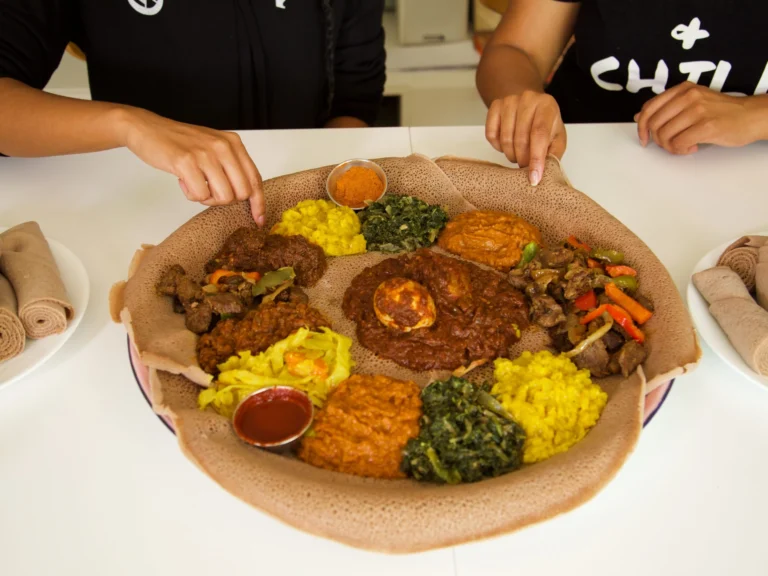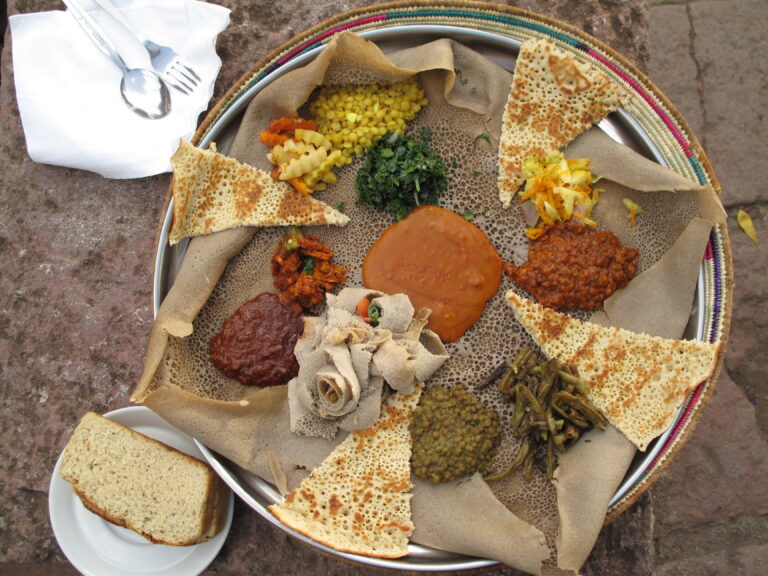Introduction: Exploring Eritrean cuisine
Located in the Horn of Africa, Eritrea boasts a rich cultural heritage that has been influenced by various civilizations throughout history. Its cuisine is a reflection of this diversity, with a range of dishes that are both unique and distinct. Eritrean cuisine, like its neighbor Ethiopia, is known for its use of spices and herbs, as well as its emphasis on communal dining.
A diverse and flavorful cuisine
Eritrean cuisine is characterized by its diversity, as it features a variety of dishes that cater to different tastes and preferences. One of the most unique aspects of Eritrean cuisine is its vegetarian options, which are typically served with injera, a fermented flatbread made from teff flour. Meat dishes are also popular, with lamb and chicken being the most common choices. In addition, seafood is a staple in coastal regions, which is reflected in dishes like zigni, a seafood stew that is popular in Massawa.
Traditional Eritrean dishes
Eritrean cuisine is steeped in tradition, with many dishes being passed down through generations. One of the most popular dishes is tsebhi, a stew made from meat and vegetables that is typically served with injera. Another staple is ful, a fava bean stew that is often eaten for breakfast. Other traditional dishes include zigni, which is a spicy meat stew, and shahan ful, a dish made from lentils, tomatoes, and onions that is enjoyed throughout the country.
The role of injera in Eritrean cuisine
Injera is a fundamental component of Eritrean cuisine, and it is served with almost every meal. It is made from teff flour, which is known for its high nutritional value, and is fermented for several days before being cooked. Injera is used as both a utensil and a plate, with diners tearing off pieces of the bread and using it to scoop up the different dishes.
Spices and flavors in Eritrean cooking
Eritrean cuisine is known for its bold flavors, which are achieved through the use of a variety of spices and herbs. The most common spices used in Eritrean cooking include cumin, coriander, and ginger, while herbs like basil, thyme, and parsley are also popular. In addition, the use of berbere, a spice blend made from chili peppers, paprika, and other ingredients, is ubiquitous in Eritrean cuisine, and is used to add heat and depth of flavor to many dishes.
Influences from neighboring countries
Eritrean cuisine has been influenced by various neighboring countries over the centuries, including Ethiopia, Yemen, and Italy. Ethiopian cuisine has had the biggest impact, with many Eritrean dishes being similar or identical to Ethiopian ones. Yemeni influence is evident in the use of spices like cumin and coriander, while Italian influence can be seen in dishes like pasta with meat sauce, which is a popular dish in Asmara.
Eritrean cuisine in the diaspora
Eritrean cuisine has spread around the world thanks to the Eritrean diaspora, with many restaurants serving traditional dishes in countries like the United States and Australia. In addition, many Eritrean expatriates have adapted their cuisine to suit local tastes, resulting in fusion dishes that blend Eritrean flavors with those of their adopted country.
Conclusion: Discovering Eritrean signature dishes
While there are no definitive signature dishes in Eritrean cuisine, there are many dishes that are unique to the region and have become synonymous with Eritrean culture. From injera to tsebhi to ful, Eritrean cuisine is a testament to the rich and diverse culinary traditions of the Horn of Africa, and is well worth exploring for anyone interested in discovering new and exciting flavors.



